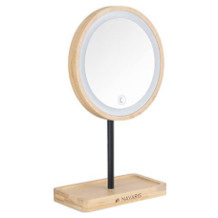Weighing scales purchasing advice: how to choose the right product
- The most important facts in a nutshell
- Personal scales help you to keep an eye on your body weight and should be standard equipment in every bathroom.
- There are analogue personal scales and digital scales that are equipped with additional functions such as body fat analysis.
- So-called Connect scales use smart technology to store and evaluate the measurement directly in the mobile phone.
- In order to achieve correct and comparable results, it is important to weigh on the right surface and at the right time.
- When choosing the right bathroom scales, consumers should pay attention to features such as measuring accuracy, maximum load capacity, material properties and the type of display.
A scale belongs in every household
Going to the bathroom scales is not only important for figure-conscious people or competitive athletes. It is true that changes in body size can also be noticed on a tight T-shirt or slipping trousers. However, only the scales provide concrete and comparable figures. Therefore, checking your body weight should be a regular part of everyday life for everyone, whether young or old, man or woman.
If you want to lose weight, buying a personal scale is the first step towards better health. This is the only way to see how well you are progressing and whether dietary changes and training are actually making a difference. A concrete number also makes it harder to suppress the unpleasant reality and is perhaps the necessary impetus to finally get started.
Watch your weight as you get older
As we age, our metabolism slows down, making it far more difficult to maintain a slim figure. Every little calorie sin is immediately noticeable on the hips. The body builds less muscle, the body fat percentage increases.
But not everyone wants to lose weight, in some cases more body fat would be better for health. Many a senior citizen has to struggle with being underweight due to a lack of appetite, the use of medication or an illness. Here, too, it makes sense to keep an eye on body weight, because the fat reserves help to arm the body against old age and to survive longer periods of illness.
A daily ritual
For health-conscious people and all those who specifically want to build muscles, daily weighing is almost a ritual. More and more people are using fitness apps in which they enter their weight among many other values. These people will hardly resort to the simple personal scales with mechanical weight display. For them, digital scales are reliable partners, because they can do even more than just provide information about weight. After all, body weight alone does not say much. What matters is the ratio of muscles, body water, bone mass and body fat. Once you have finally overcome your inner obstacle and started your fitness programme, it can be very motivating to see how this ratio changes for the better.
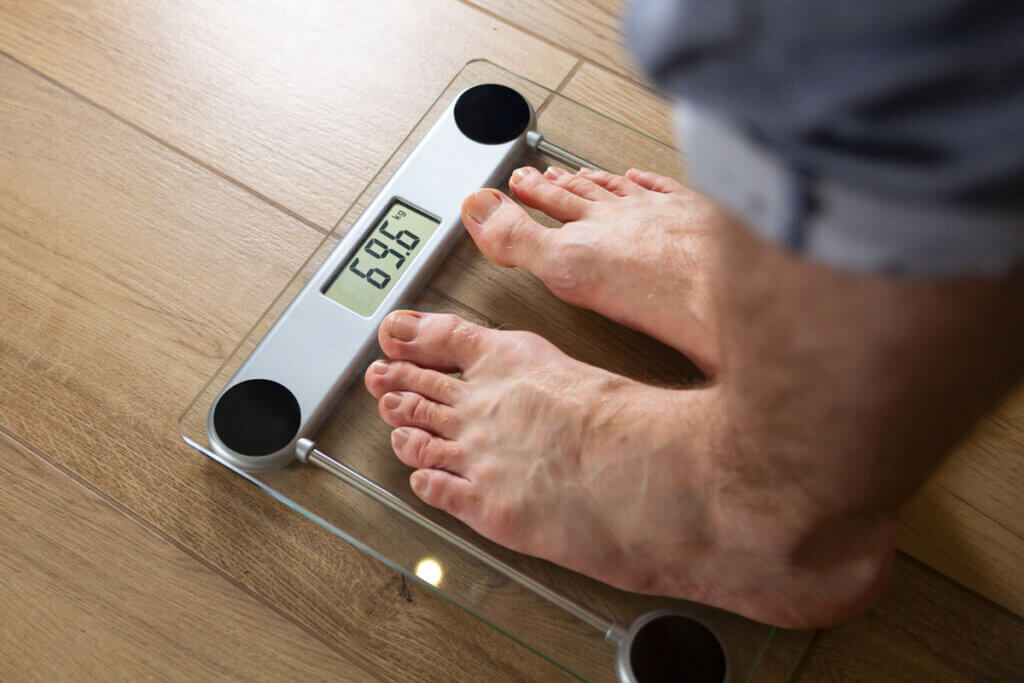
What types of bathroom scales are there?
There are analogue bathroom scales, which only measure body weight, and digital bathroom scales. The latter require batteries for operation and have some interesting additional functions. It makes sense to buy a digital scale or a body fat scale if you want to look at the ratio of fat, water and muscle in your body. Some of these scales have additional features such as voice and memory functions. Digital personal scales are usually more expensive than mechanical ones and sometimes less robust. Analogue and digital bathroom scales both measure weight. That’s the only thing they have in common, because digital bathroom scales can do much more than their mechanical counterparts.
When choosing the right bathroom scales, it depends on what you want to achieve. Do you only want to check your weight now and then or have you prescribed yourself a strict training programme and want to track your progress very closely? For the former, a simple analogue scale may be enough. The latter requires considerably more functions. Electronics retailers, drugstores, supermarkets and online shops offer a huge selection of digital multifunction scales or body fat scales. The spectrum ranges from simple analogue body scales to high-tech models with Bluetooth connectivity and a freely positionable LCD display that not only show weight and body fat, but also muscle mass, BMI (body mass index) and many other interesting values.
Analogue scales
Analogue or mechanical personal scales only show weight. They are suitable for anyone who wants to keep it simple and who is attracted by the retro look that many models have. The housing of the scales is often made of plastic. Inside there is a spring or a hydraulic system that shows the corresponding weight on the scale when it is loaded. You can use the scale to determine your weight to the nearest 500 or 1,000 grams.
Analogue bathroom scales do not need batteries or electricity and usually last a long time because of their sturdy construction. However, compared to digital bathroom scales, they measure less accurately and do not have any additional functions. They are also more sensitive to humidity and temperature fluctuations. This could be a problem in the bathroom. However, for people who only want to get on the scales from time to time, analogue models are still perfectly adequate.
Advantages
- No battery needed
- No follow-up costs
- Stable and durable
- Reasonable price
Disadvantages
- Inaccurate measurement
- No additional functions
- Sensitive to fluctuations in temperature and humidity
Digital personal scales
Digital or electronic bathroom scales only work on battery power – either button cells or AAA batteries. In rare cases, they require a power supply. They determine the weight with the help of sensors and have an LC display that is often illuminated for easy reading. They display the weight in 50 or 100 gram increments. This makes them much more accurate than mechanical scales. In addition, many digital models are slimmer and lighter.
The biggest advantage of electronic scales are their additional functions. You can use them to determine your muscle mass, measure your body fat percentage or determine other body-related data. So if you want to get a precise insight into your body values to compare them and record training progress, for example, you should go for a digital bathroom scale. However, these models have a higher purchase price than mechanical bathroom scales.
Advantages
- Very accurate measurement
- Additional functions
- App connection
Disadvantages
- Batteries or power supply required
- Relatively expensive
- Less robust than analogue models
What are body composition scales?
Body composition scales not only provide information about weight, but also additional values such as muscle mass, fat and water content. They work with the so-called bioimpedance method, in which resistance is measured by means of electricity. Two to four electrodes send light, harmless current pulses through your body when you touch them with your feet. The scale uses an algorithm and the data you enter in advance, for example gender, height and activity. Based on the resistance determined from this, it calculates the ratio of fat, muscle and water. The greater the measured resistance, the greater the proportion of fat in the body, because fat, unlike water and muscles, is a poor conductor of electricity.
However, the results provided by the models are not very accurate because the pulses often only reach the lower body. Body composition monitors that are also equipped with hand sensors work somewhat more reliably. A rough check of values and changes is possible in any case. If you want to know exactly, you have to go to the doctor and get on a medical scale.
What can smart Connect scales do?
Connect scales offer the smart additional function of transferring the values directly to the smartphone. Such digital personal scales are equipped with Bluetooth or wi-fi and give you the option of saving and evaluating your results in an app. Products with Bluetooth have the advantage of requiring less power, but body composition scales models with wi-fi are easier to integrate into a smart home environment. The apps are usually free of charge; some apps are able to prepare the data graphically. If you want to keep an accurate overview of your weight history, it is worth buying such a device.
What makes a good bathroom scale?
When deciding what to buy, you should be guided by several criteria. These include measuring accuracy, load capacity, material and design as well as functions and display. The measurement of digital scales is more accurate than that of analogue scales and they have more functions. The maximum load is especially important for overweight people, while a large display is important for people with visual impairments. Material and design should be of high quality and match the interior of the bathroom.
Measuring accuracy and load capacity
Even if the result is not always cheerful, the measuring accuracy of the bathroom scales is of course decisive for the correct assessment of one’s own body condition and training results. Digital scales are ahead of the game here because they indicate the weight more precisely, usually to within 100 grams. This means that even the smallest changes can be recognised immediately – an important motivation for some, especially at the beginning of weight reduction.
The maximum load naturally plays a role especially for more corpulent buyers. A quarter of Germans are heavily overweight and weigh more than 100 kilograms. If the scale has too little load capacity, it can no longer reliably display such weights. Most personal scales are set for 150 to 180 kilograms, but some can only handle 150 kilograms or less. People who are very overweight should choose models with a maximum capacity of 200 kilograms or more. Fortunately, scales with a high load capacity are also very affordable. The manufacturer Soehnle, for example, offers such body scales for less than 30 euros. So the load capacity has only a small effect on the price.
Obesity on the rise
More and more Germans are affected by obesity. Almost a quarter of the German population has a body mass index of over 30 and is thus considered obese. This is a great burden for those affected and for the health care system, as severe obesity carries the risk of many secondary diseases such as diabetes, high blood pressure and heart disease.
Material and design
The material says a lot about the quality of the bathroom scales. Is it of high quality or cheaply screwed together? The tread surface of digital bathroom scales is often made of safety glass or stainless steel, whereas analogue models usually have a tread surface made of plastic. It is important that the material is robust and the scale is stable. If the device is intended for seniors, the tread should also be non-slip to prevent falls.
The bathroom scales should of course fit visually into the bathroom, so the design also plays a role. Most bathroom scales have a square, often square basic shape. The choice is huge and small details make all the difference. From simple colours to a chic metal look or unusual wooden design, everything is available. Glass digital bathroom scales are often easier to store and more inconspicuous. Sometimes the safety glass is decorated with colourful motifs – such glass scales are more for the playful than for consumers who appreciate body scales with safety glass treads for their minimalist design.
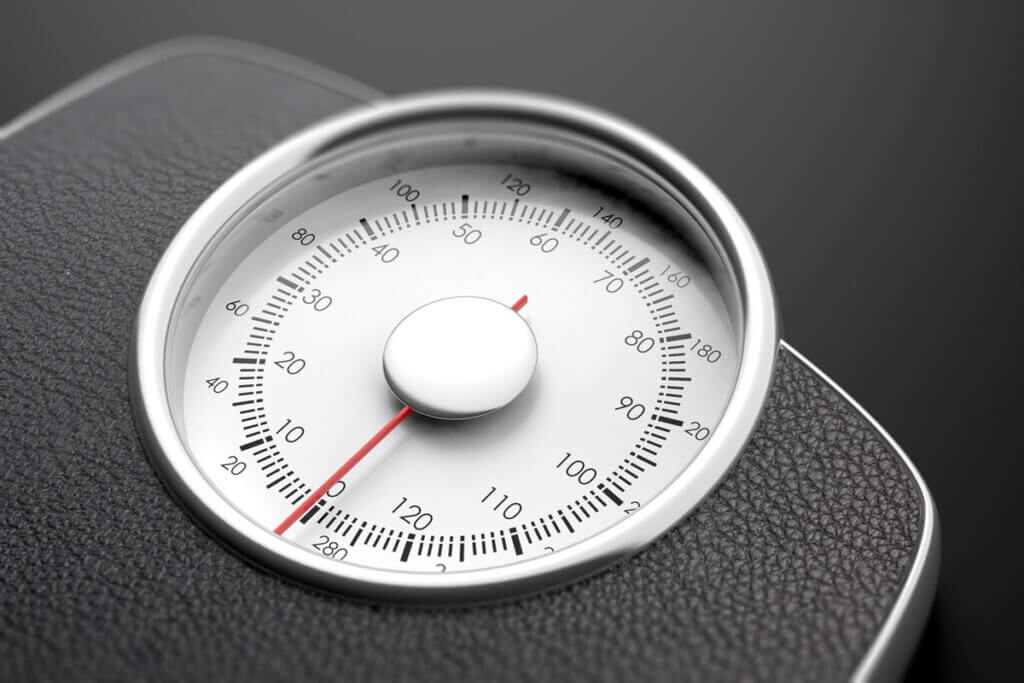
Attention to the display
The weight display should be large enough and easy to read. With some digital bathroom scales, you can remove the LCD display and attach it to the wall, for example. This is an advantage for senior citizens or people with impaired vision, as are large digits or a voice output. If the display turns on automatically when you step on it and turns off again automatically when you step off it, you don’t have to bend down.
Which functions are worthwhile?
If you are interested in reducing your weight, but not only in losing muscle mass, a personal scale with an analysis function is a good choice. By using such a body fat scale, you can find out whether you are really losing fat. The scales do not measure the percentage of body fat, water and muscle one hundred per cent accurately, but they do provide an overview. Some manufacturers of personal scales advertise other features in addition to the analysis functions. But not all of them make sense and you should ask yourself before buying whether it is really necessary for you to measure your heart rate, for example. Some functions, such as measuring visceral fat, are simply nonsense, as only medical devices can provide reliable information about dangerous belly fat. Memory and voice output functions, on the other hand, are helpful if several members of your household use the device and if you suffer from impaired vision.
Memory and voice output
If you want to document all the components of your daily routine, such as nutrition, sleep and state of mind, in apps, the smart functions of a Connect scale that transfers the measurement results to an app are worthwhile.
A memory function is useful for anyone who shares their bathroom scales with several flatmates. This way, they only have to enter their data once and receive individual results. Pay attention to how many memory locations you need. Some digital bathroom scales offer up to 20. Some models even recognise the user automatically or have a guest mode if you don’t want to store the data.
Models with an additional voice function that announces the measurement result aloud are suitable for blind people and people with severely impaired vision. Otherwise, a voice output is not absolutely necessary.
How do you weigh yourself correctly?
To avoid mistakes when weighing yourself, there are a few points to keep in mind. The bathroom scales should always be placed on the same surface, which should ideally be flat and firm – tiles are best. Always weigh yourself at the same time. This ensures comparable results, because in the course of the day your weight can fluctuate by several kilograms due to food intake, exercise or water retention. For correct results, it is also important that the scale is calibrated correctly and that you stand in the middle of it.
So that the bathroom scales fulfil their purpose, you must pay attention to four points when using them:
- The time: Create the same starting position for weighing. This works best if you weigh yourself first thing in the morning after getting up and are as unclothed as possible. In this way you avoid that your diet and activities of the day as well as your clothing influence the measured value. Also, always use the same scale.
- The surface. Leave the device in the same place, because a change in the ground can have an influence on the readings. It is important that the floor is even and firm. Tiles are ideal. Under no circumstances should you use the bathroom scales on carpet or other uneven surfaces.
- Position. Make sure that you stand in the centre of the bathroom scales. With an electronic scale, it is also important that your feet are in contact with all the electrodes. For example, some models will light up to let you know if your feet are not exactly on the electrodes. Note that the moisture of your feet can also affect the measurement result. It is best to always make sure that your feet are dry before you step on the scale.
- Calibration. Check from time to time whether your bathroom scales are still measuring accurately. To do this, simply place an object on the surface whose weight you know. If the result does not match, calibrate the scale according to the operating instructions. You should set an analogue bathroom scale to zero before each weighing.
Interpret weight correctly
What weight is considered normal or healthy? The mere number itself does not say much. It depends on the body mass index, BMI for short, i.e. the interaction of weight and height. The BMI is calculated as follows:
Body weight in kilograms divided by height in metres squared. A 1.6-metre tall person weighing 60 kilograms therefore has a BMI of 23.4. In younger years, a BMI of 19 to 24 is recommended, middle-aged people should have a BMI of 21 to 27, and from the age of 65, the BMI may be up to 29 without being considered overweight.
Fig. 1: © JacZia / stock.adobe.com | Fig. 2: © Rawf8 / stock.adobe.com

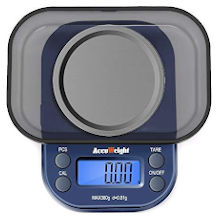
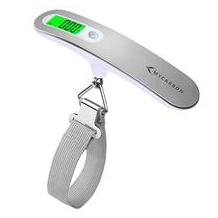
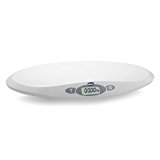
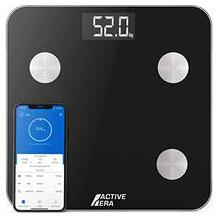
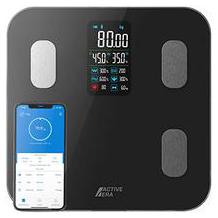
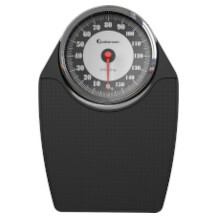
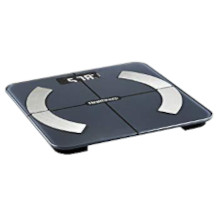
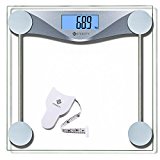
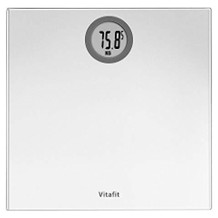
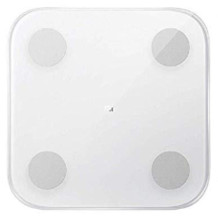
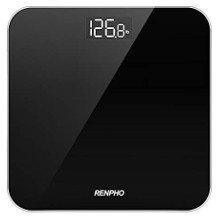
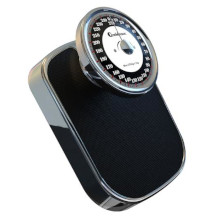
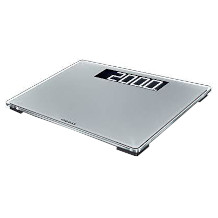
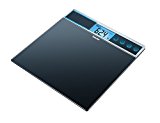
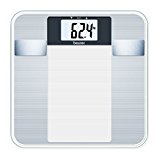
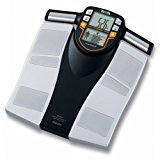
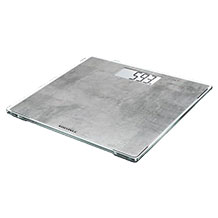
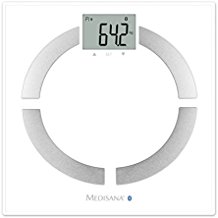

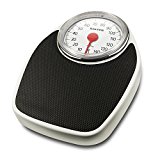
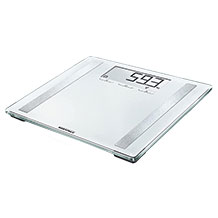

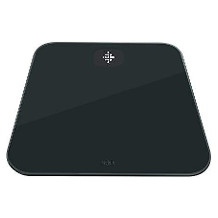
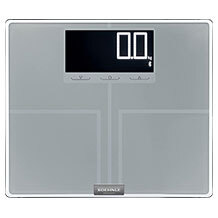
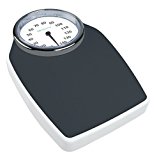
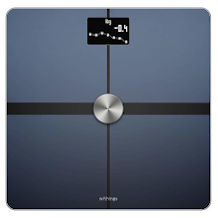

 686 reviews
686 reviews






